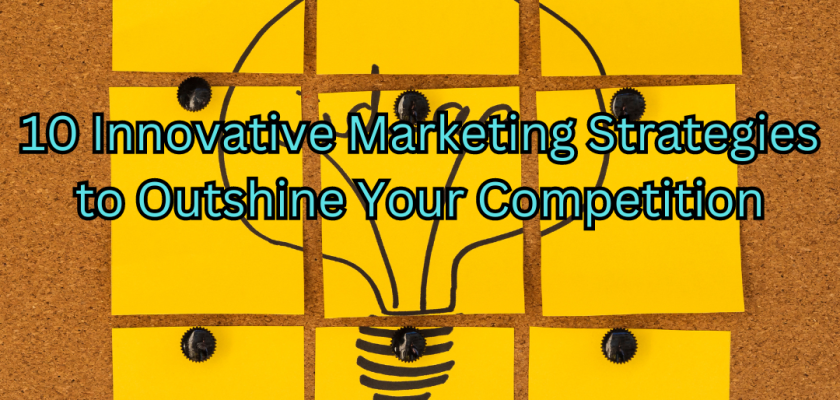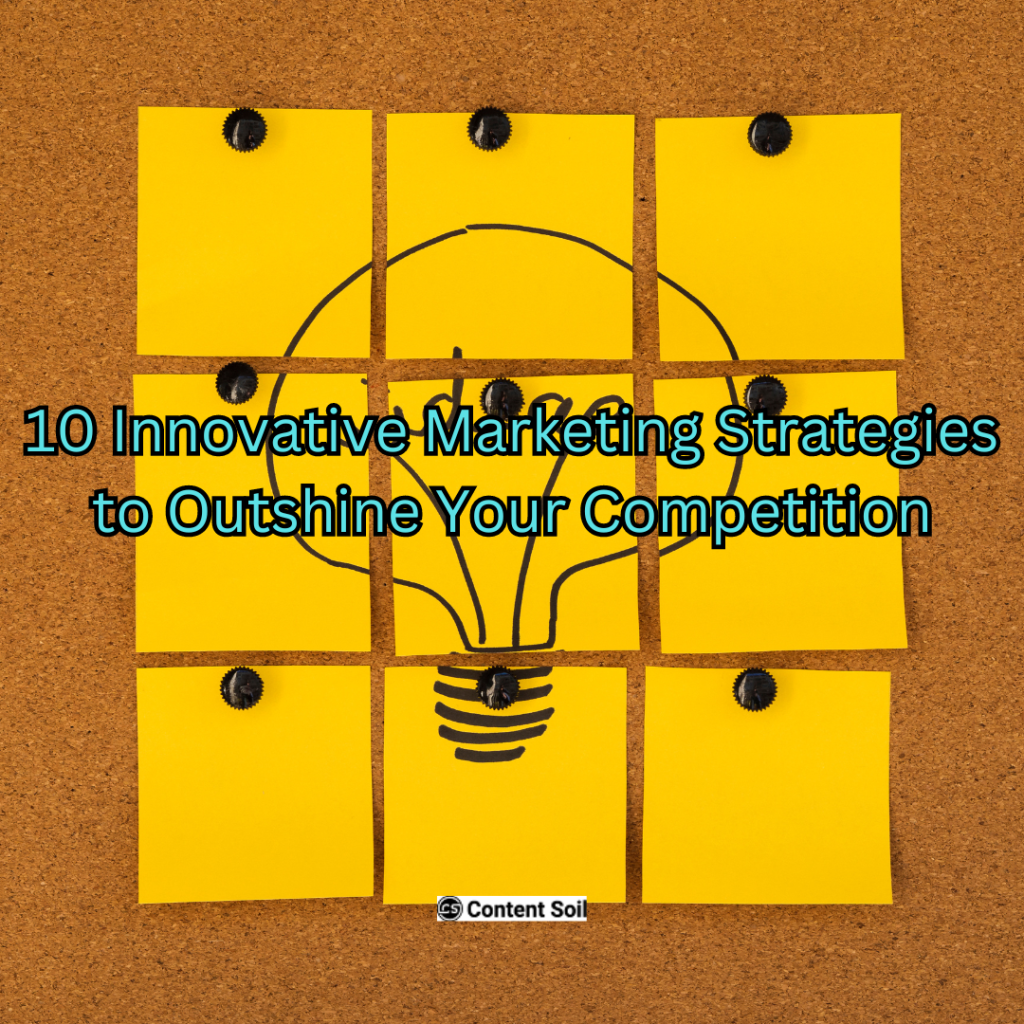Introduction:
In today’s rapidly evolving marketplace, standing out among competitors requires more than just a great product or service. It demands innovative and strategic marketing approaches that can effectively capture and retain customer attention. Whether you’re a small business or a large corporation, implementing the right marketing tactics is crucial for success. This guide explores the top 10 marketing ideas to help you navigate and thrive in the current competitive landscape. From leveraging digital platforms and influencer partnerships to personalizing customer experiences and embracing sustainability, these strategies will equip you to outshine your competition and achieve sustained growth.
Competing in today’s dynamic market requires innovative marketing strategies to differentiate your brand and attract customers. Here are ten top marketing ideas to help you stay ahead of the competition:
Content Marketing and SEO
Content Marketing:
Creating high-quality, relevant content that addresses the needs and interests of your target audience is crucial. This includes blog posts, videos, infographics, and eBooks. The goal is to provide value, establish authority, and build trust.
SEO:
Optimizing your content for search engines is essential for visibility. This includes keyword research, on-page optimization, and building backlinks. By improving your search engine rankings, you increase organic traffic and attract more potential customers.
Social Media Engagement
Platform Selection:
Choose social media platforms where your target audience is most active. Facebook, Instagram, LinkedIn, Twitter, and TikTok each have unique user demographics and engagement styles.
Content Strategy:
Develop a diverse content strategy that includes educational posts, promotional offers, user-generated content, and interactive elements like polls and quizzes. Consistent posting and engagement are key to building a loyal following.
Influencer Partnerships
Identify Influencers:
Collaborate with influencers who align with your brand values and have a strong following within your target market. Micro-influencers (those with smaller, highly engaged audiences) can be particularly effective.
Campaigns:
Run influencer marketing campaigns where influencers create authentic content featuring your products. This can significantly boost brand awareness and credibility.
Email Marketing Personalization
Segmented Lists:
Divide your email list into segments based on demographics, purchase history, and behavior. This allows for targeted and personalized email campaigns.
Automation:
Use marketing automation tools to send personalized emails at the right time, such as welcome emails, abandoned cart reminders, and birthday offers. Personalized emails have higher open and conversion rates.
Customer Loyalty Programs
Rewards System:
Implement a customer loyalty program that rewards repeat purchases and engagement. Points-based systems, tiered rewards, and exclusive offers can incentivize customers to return.
Experience:
Enhance the customer experience by offering early access to new products, special discounts, and personalized recommendations. A well-executed loyalty program can increase customer retention and lifetime value.
Video Marketing
Engaging Content:
Create engaging video content that tells a story, showcases your products, and highlights customer testimonials. Videos are highly shareable and can capture attention more effectively than text-based content.
Platforms:
Leverage platforms like YouTube, Instagram Stories, and TikTok for video marketing. Live streaming and webinars can also be powerful tools for engaging with your audience in real-time.
Data-Driven Marketing
Analytics:
Utilize data analytics to understand customer behavior, preferences, and trends. Tools like Google Analytics, CRM software, and social media insights provide valuable data.
Personalization:
Use this data to personalize marketing efforts, such as product recommendations, targeted ads, and personalized content. Data-driven marketing helps in making informed decisions and improving campaign effectiveness.
Experiential Marketing
Events and Pop-Ups:
Organize events, pop-up shops, and experiential campaigns that allow customers to interact with your brand in person. These experiences create memorable connections and can generate buzz.
Virtual Experiences:
With the rise of digital interactions, consider virtual events, webinars, and online workshops. These can reach a broader audience and provide interactive brand experiences.
User-Generated Content (UGC)
Encourage Sharing:
Motivate customers to share their experiences with your products on social media. This can be through contests, hashtags, or featuring customer photos and reviews on your platforms.
Authenticity:
UGC adds authenticity to your brand and builds trust. Potential customers are more likely to trust content created by other consumers than by the brand itself.
Sustainability and Social Responsibility
Eco-Friendly Practices:
Implement sustainable practices in your operations and highlight them in your marketing. Consumers are increasingly conscious of environmental impact and prefer brands that align with their values.
Social Initiatives:
Engage in social responsibility initiatives, such as charitable partnerships, community support, and ethical sourcing. Communicate these efforts to your audience, showing that your brand is committed to making a positive impact.
Conclusion
Staying competitive in today’s market requires a blend of innovative strategies, customer-centric approaches, and leveraging technology. By focusing on high-quality content, engaging on social media, collaborating with influencers, personalizing email marketing, fostering customer loyalty, producing compelling video content, using data-driven insights, creating memorable experiences, encouraging user-generated content, and promoting sustainability, you can effectively differentiate your brand and attract a loyal customer base. Adapting these marketing ideas to your specific business needs and continuously monitoring their performance will ensure sustained growth and success in a competitive market.


